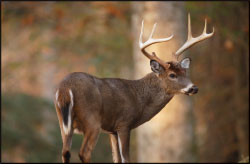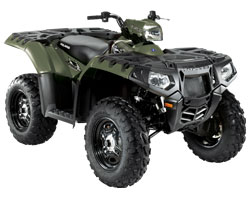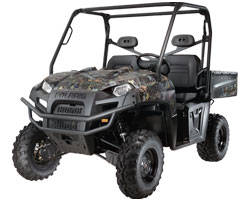How to Judge a Trophy Buck's Potential
One of the obvious—and most enjoyable—fringe benefits of QDMA management is the opportunity to view and hunt adult bucks. Watching a buck that you passed a shot on as a 1-1/2 year old grow into something special is a common experience for QDMA practitioners. Whether you harvest the buck or not is rarely as important as just knowing he’s living on your property!

Though many hunters dream of tagging a record-book buck, it’s important to have realistic goals. Three main factors—age, nutrition, and genetics—influence antler growth, and we can only influence the first two. Allow a buck to grow another year while providing him abundant food sources and quality habitat, and he will reach his potential. But the process takes time and not every buck has “the right stuff” to become a monster.
Rather than holding out for a specific antler size, a solid goal would be to wait for bucks to reach an older age class. For example, if the bulk of the buck harvest on your property has consisted of 1-1/2 year olds, holding out for a 2-1/2 year buck is reasonable. If in future seasons you want to wait for even older bucks, by all means do so. Some factors to consider when adjusting your goal will be the size of your property, hunting pressure in the area, and the amount of time you have to hunt.
Learning to age bucks “on the hoof” is not only a critical skill in this process, it’s an enjoyable one. It takes time and practice, but what better form of homework can a deer hunter find? You can start the process as you observe bucks at your food plots from your Polaris® RANGER 800 XP®. This new RANGER has an 800 Twin EFI engine and Dual A-Arm Front suspension, a feature that makes for easier steering, no harsh feedback over humps and superior ground clearance. Even better, the RANGER 800 XP’s exclusive True All-Wheel Drive reacts automatically to terrain changes; and the 800 Twin EFI engine delivers fast starts to get to the site faster.
While aging bucks is an imperfect process, here are some general guidelines:

1-1/2 year old buck: In addition to its first and smallest rack (in some areas spikes or fork antlers), a “yearling” will have long legs, a slim body, and skinny neck.
2-1/2 year old buck: The buck’s 2nd set of antlers will be noticeably larger and sport multiple tines and greater mass. The buck will have a larger frame than last year, and his neck will be larger, especially at the base. Still, he will have a sleek look compared to an older animal.
3-1/2 year old buck: The buck’s antlers have grown, both in length and mass. But his body shows the greatest change; his neck is noticeably larger, his shoulders are more beefy. His overall frame resembles a well-muscled race horse!
4-1/2 year old buck: Nearing their prime, the buck’s antlers are now heavy and impressive. His body has changed remarkably as his neck starts to “disappear” into his shoulders, making his hips appear slimmer.
5-1/2 (and older) buck: The buck’s antlers are massive at the base, and may sprout abnormal points like drop tines and stickers. His shoulders are beefy and his belly appears to sag. The next two years are his prime!
ADVERTISEMENT
Related Vehicles
The Polaris Sportsman® 850 XP
Sportsman XP Facts:
- 850 SOHC Twin EFI Engine
- Available Electronic Power Steering
- Legendary Smooth Rolled Independent Rear Suspension (IRS)
- Superior Ergonomics
Learn More about the Sportsman XP >>
The Polaris RANGER 800 XP®
Ranger 800 XP Facts:
- New! 800 Twin EFI Engine
- Available Electric Power Steering
- Dual A-Arm Front Suspension
- Legendary Smooth Independent Rear Suspension (IRS)
Deer Management Archive
2009 Archive
- How to Judge a Trophy Buck's Potential
- Kick-Starting Your Management Plan
- Mapping Your Whitetail Hunting Paradise
- Conduct a Herd Monitoring Profile
2008 Archive
Deer Population by State
Weekly QDM Tips
Take a camera survey of your herd in the pre-season. Mount trail cameras near high-traffic deer areas such as mineral licks, food plots, or fence crossings. Record the number, sex and approximate age of every deer you “shoot”, then compare that data with your field observations come hunting season.







